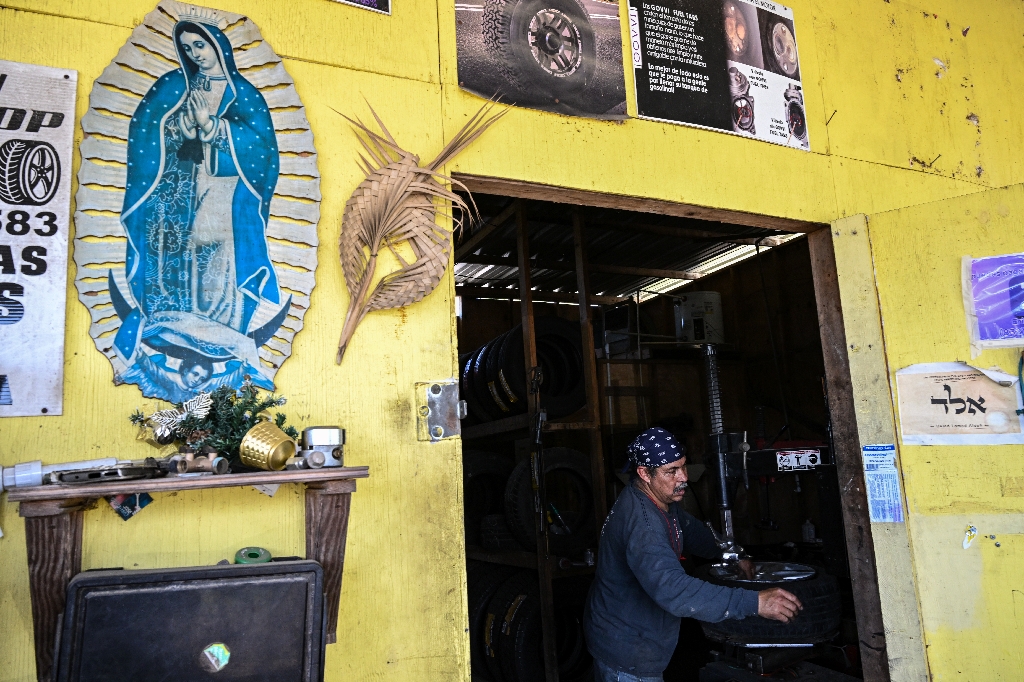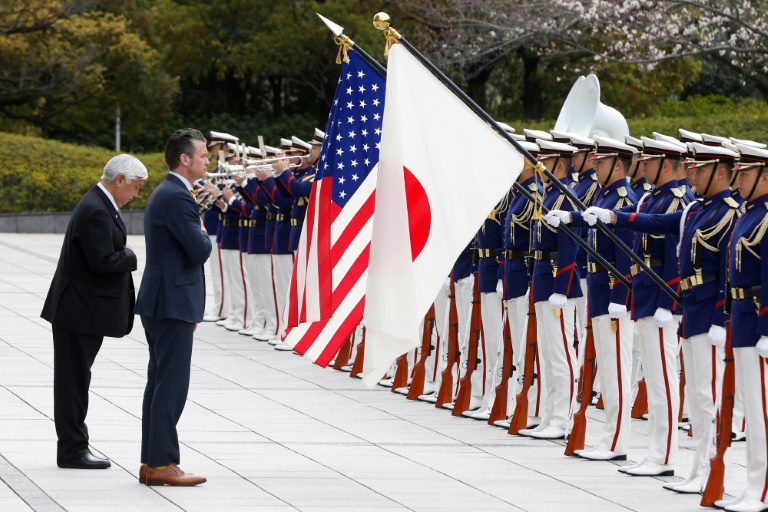(AFP) – Dozens of overturned tents, “Free Palestine” signs strewn on the lawn, keffiyehs and flashlights discarded in haste: not much of the pro-Palestinian protest encampment was left Thursday morning at the University of California, Los Angeles.
After a week of occupying a central area of the sprawling campus in protest at Israel’s war against Hamas in the Gaza Strip, police in riot gear forcibly removed demonstrators in an operation that lasted through the night.
In tense scenes, officers used flashbang explosions to disorient protesters and disperse crowds. Eventually, security forces lined up the last remaining students, wearing white helmets, against a brick wall. Dozens of them were handcuffed with zip ties, before being handed over to officers tasked with identifying them.
Some held their heads high — one woman with curly hair shouted “Free Palestine!” before being taken away for processing.
“It was quite a peaceful protest. An operation like this shouldn’t happen,” said one UCLA graduate who asked not to be named, as he observed the action from a safe distance. Like hundreds of others, he spent the entire night near the camp in support of the protesters.
“The university can’t act like this. You can’t be silent for the first few days and then suddenly declare the encampment unlawful. If it was illegal, they should have said so from the get-go,” the graduate said.
– At first, tolerance –
Faced with the determination of the pro-Palestinian movement that has gathered steam on university campuses across the United States, authorities at UCLA, a public institution, initially set themselves apart with a tolerant approach.
Administrators attempted to avoid calling in the police. Private security personnel were hired to keep watch over the UCLA protest camp, wearing yellow vests and patrolling on bicycles.
That was in sharp contrast to the scene at the private University of Southern California, also in Los Angeles, which called in police in riot gear on the first day that a protest encampment was set up.
But over the course of a week, the situation grew increasingly tense and emotionally charged.
On Sunday at UCLA, thousands of people attended a pro-Israeli counter-demonstration organized by non-university groups just opposite the encampment. Clashes ensued, with both sides hurling insults and shoving each other.
Tensions swirled on subsequent nights between those ensconced in the protest camp and counter-protesters, many of them masked. The situation descended into violence late Tuesday, with video footage showing the camp under siege from dozens of masked and hooded people, some wielding long sticks as weapons.
That incident prompted university leaders to shift gears, declaring the encampment illegal.
“No one at this university should have to encounter such violence,” UCLA Chancellor Gene Block said Wednesday, calling the assault “appalling.” He also said the unrest had “put many on our campus, especially our Jewish students, in a state of anxiety and fear.”
– Human chains –
Block’s assessment was rejected by numerous UCLA professors, who defended the students’ constitutional rights to free speech and assembly.
“The university and the authorities had the opportunity to de-escalate,” said Graeme Blair, an assistant professor of political science, as he watched police dismantle the encampment.
“They sent police very late for extremists last night and now they’re just targeting students engaging in a peaceful protest.”
A few hours earlier, Blair had organized a march with about 50 colleagues to reject accusations of anti-Semitism among the main protesters.
Given the delicate nature of the situation, police proceeded deliberately and slowly overnight to remove demonstrators from campus. The camp was first surrounded by security forces for several hours, so officers could methodically remove the wooden pallets and plywood used as barricades.
Students formed human chains as a show of resistance, linking arms as flashbangs went off. One by one, they were detained and led away.
Now, all that remains is the clean-up operation. One of the biggest jobs will be to remove the graffiti from the ornate neoclassical buildings around the encampment.
“Ceasefire now!” said one message.
– Romain FONSEGRIVES
© 2024 AFP




